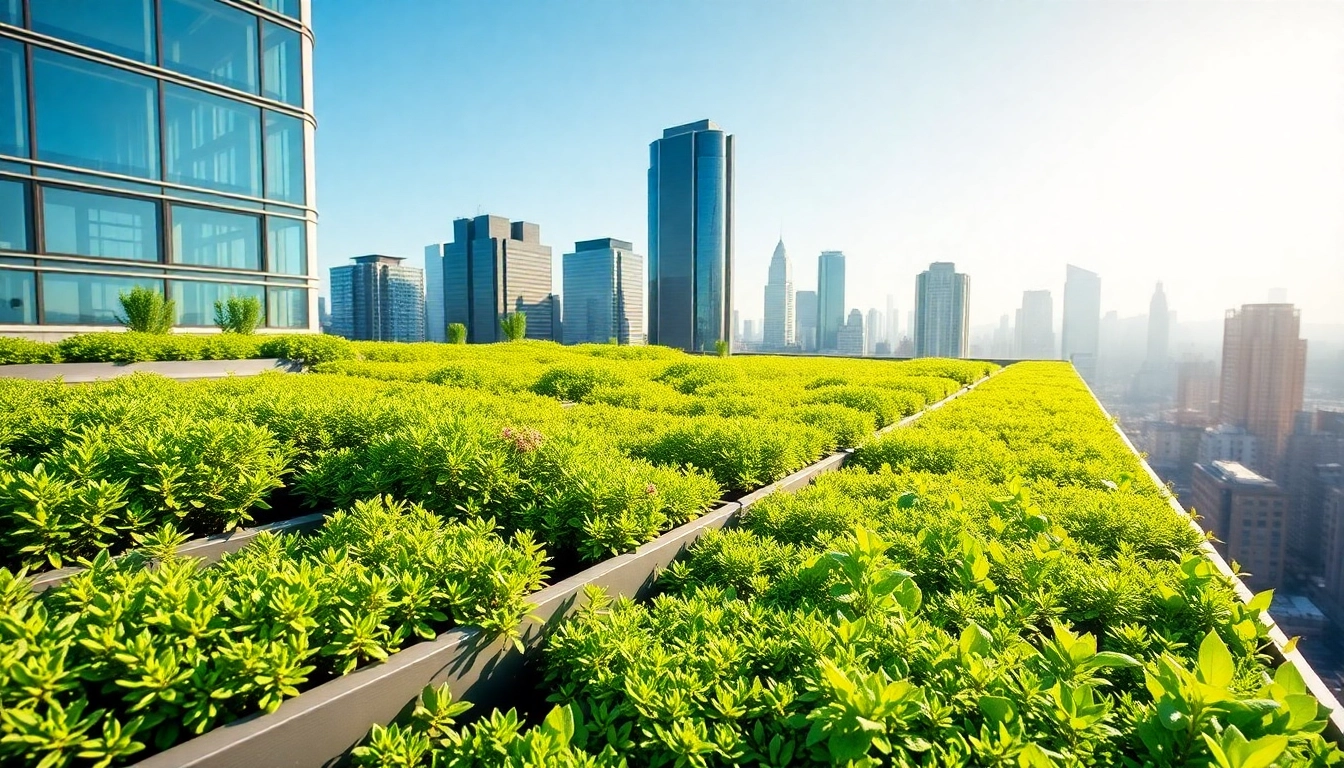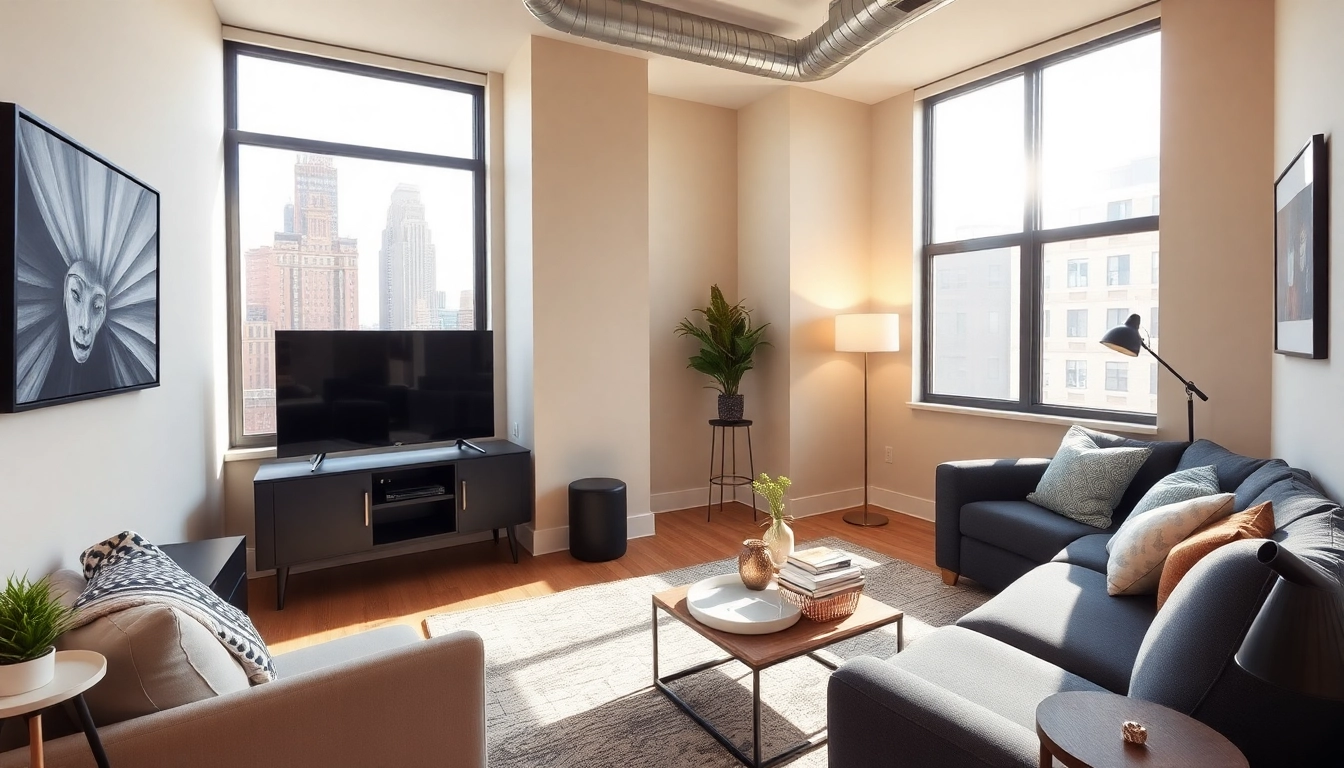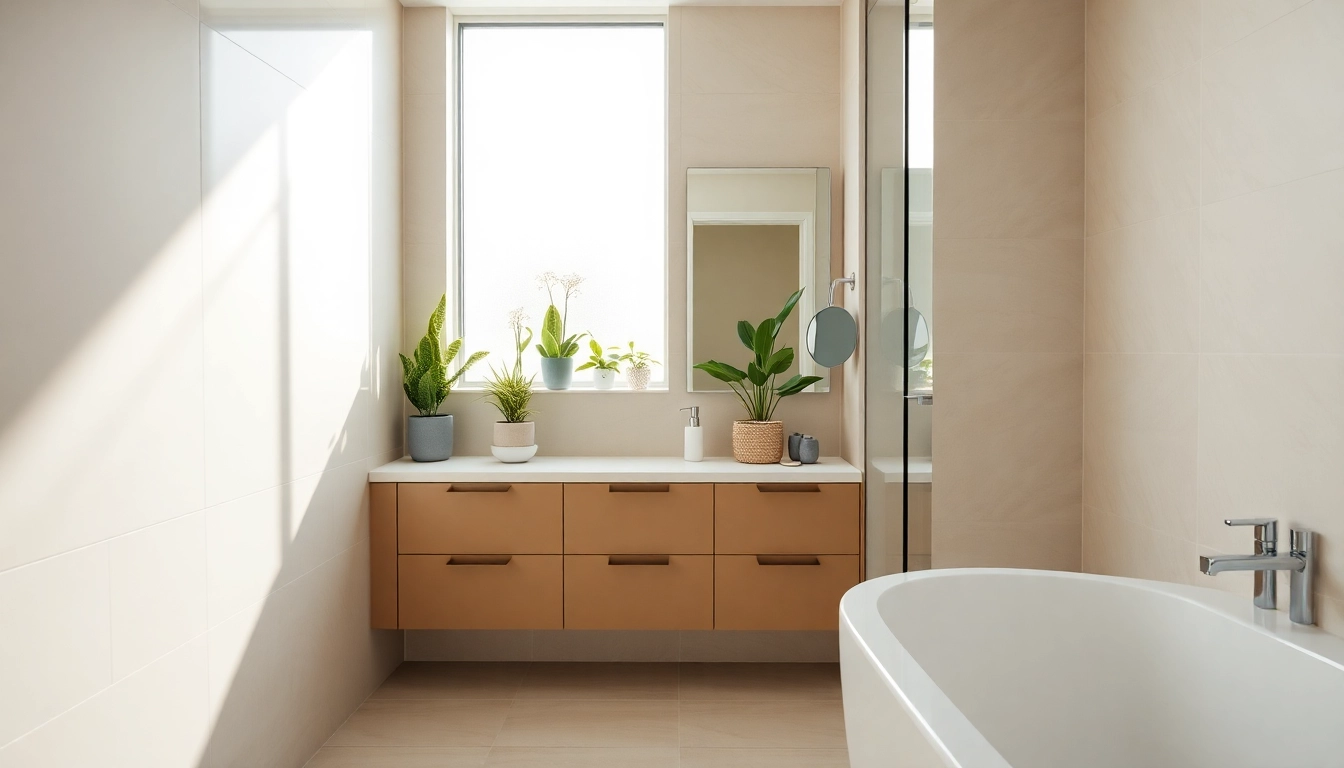Understanding the Modular Green Roof System
What is a Modular Green Roof System?
A Modular Green Roof System is a comprehensive approach to integrating vegetation into urban environments through pre-planted sections that can be easily installed on rooftops. These modules consist of lightweight, engineered plant trays that are designed to retain moisture and support various types of vegetation, effectively turning underutilized roof spaces into vibrant green areas. The technology behind these systems allows for increased biodiversity, improved air quality, and enhanced aesthetic appeal, making them an appealing choice for sustainable urban development. By utilizing a Modular Green Roof System, cities can tackle many ecological and social challenges they face today.
Key Benefits of Modular Green Roof Systems
The advantages of Modular Green Roof Systems extend far beyond aesthetic enhancements. Here are several critical benefits:
- Stormwater Management: These systems absorb rainwater, reducing runoff and decreasing the risk of flooding.
- Energy Efficiency: By providing insulation, green roofs help regulate building temperature, leading to lower energy costs for heating and cooling.
- Air Quality Improvement: Plants filter pollutants and carbon dioxide, contributing to healthier urban air quality.
- Increased Biodiversity: Modular roofs can support various plant species and create habitats for birds and insects, thus boosting urban biodiversity.
- Enhanced Aesthetics: Green roofs improve the visual landscape of buildings and neighborhoods, providing greener spaces in otherwise concrete-heavy urban settings.
- Noise Reduction: Vegetation can help absorb sound, making urban environments quieter and more pleasant to live in.
Components of a Modular Green Roof System
A successful Modular Green Roof System consists of several critical components that work together to support plant life and maintain roof integrity:
- Modules: The pre-planted trays or blocks that host the vegetation are typically constructed from lightweight materials.
- Growing Medium: The soil or substrate used in the modules facilitates plant growth and retains water while allowing for drainage.
- Draining Layer: This layer helps manage excess water and prevents oversaturation that can harm the plants.
- Filter Fabric: Placed above the drainage layer, it prevents soil from washing away while allowing water to drain through.
- Vegetation: A diverse selection of plants is planted within the modules to create a well-balanced ecosystem.
- Water Retention System: Some systems include features designed to capture and store surplus rainwater, promoting plant health.
Installation Process of a Modular Green Roof System
Preparation and Planning Steps
The installation of a Modular Green Roof System requires careful planning and consideration of various factors:
- Assessment of Structural Integrity: Ensure the rooftop can support the weight of the Modular Green Roof System, including wet soil and plants.
- Choosing the Right Location: Consider sun exposure, wind patterns, and accessibility for maintenance.
- Regulatory Considerations: Check local zoning laws and building codes to ensure compliance.
- Budgeting: Estimate costs not only for materials and labor but also for potential maintenance and water needs.
Choosing the Right Components
The success of a Modular Green Roof System hinges on the careful selection of its components:
- Modules: Opt for quality modules made from durable, lightweight materials that provide adequate insulation.
- Growing Medium: Choose a growing medium mix that facilitates drainage while retaining sufficient moisture for the plants.
- Vegetation: Select plant species that are native or adaptive to the local environment for optimal growth and sustainability.
- Drainage and Filtration Layers: Ensure the components support effective water management to prevent issues such as root rot.
Step-by-Step Installation Guide
Here is a detailed step-by-step guide to installing a Modular Green Roof System:
- Prepare the Roof Surface: Clean the roof and ensure it is free of debris, dirt, and any previous roofing material.
- Install Waterproofing Membrane: Apply a high-quality waterproof barrier to protect the building structure below.
- Layer the Components:
- Place the drainage layer.
- Add the filter fabric on top.
- Set up the growing medium.
- Install the Modules: Place the pre-planted modules systematically on the roof, ensuring interlocking for stability.
- Water the Modules: After installation, lightly water the modules to help settle the growing medium.
- Regular Inspections: Conduct post-installation inspections to ensure the setup is functioning as intended.
Maintenance Practices for Modular Green Roof Systems
Routine Care and Inspection
To maintain the health and longevity of a Modular Green Roof System, regular care must be instituted:
- Watering: The modules require regular watering, especially in dry conditions. Drip irrigation systems may be beneficial.
- Weed Control: Regularly inspect for and remove any weeds that may compete with the installed vegetation for nutrients.
- Pest Monitoring: Keep an eye out for pests and other issues, using eco-friendly solutions for pest management.
- Fertilization: Apply organic fertilizers or amendments as necessary to support healthy plant growth.
Common Issues and Solutions
While Modular Green Roof Systems are generally low maintenance, issues may arise:
- Ponding Water: Ensure effective drainage systems are in place to avoid water accumulation, which can lead to root rot. Adjust the drainage layer if necessary.
- Plant Failure: Replace dead or failing plants promptly and assess the surrounding conditions for potential improvements.
- Soil Degradation: Periodically check the growing medium and refresh it as needed to maintain its quality and structure.
Seasonal Care Tips
Different seasons bring varying challenges and care requirements:
- Spring: Fertilize and check for winter damage; replant as necessary.
- Summer: Monitor for pests and water regularly to combat the heat.
- Autumn: Prepare for winter by reducing watering and clearing leaves to prevent blockage in drainage systems.
- Winter: Inspect for snow accumulation and remove it gently to prevent damage to the modules.
Environmental Impact of Modular Green Roof Systems
Benefits for Urban Biodiversity
One of the most pronounced benefits of Modular Green Roof Systems is their capacity to enhance urban biodiversity:
- Habitat Creation: These systems provide vital habitats for various species, including birds, butterflies, and beneficial insects.
- Plant Diversity: By selecting a mix of native plants, green roofs support ecological balance within the urban fabric.
- Pollinator Support: Green roofs serve as critical resources for pollinators, contributing to overall biodiversity and agricultural health.
Energy Efficiency and Cost Savings
Implementing a Modular Green Roof System offers significant contributions to energy efficiency:
- Building Insulation: Green roofs act as insulators, reducing heat loss in winter and minimizing heat gain in summer.
- Reduced HVAC Load: The natural cooling properties decrease the need for air conditioning, leading to lower energy bills.
- Long-Term Savings: Although initial installation costs might be higher, the return on investment becomes evident through energy savings and extended roof lifespans.
Carbon Footprint Reduction Strategies
Modular Green Roof Systems play a vital role in reducing an urban area’s carbon footprint:
- Carbon Sequestration: Plants naturally absorb CO2, allowing green roofs to act as carbon sinks within the urban environment.
- Encouraging Sustainable Practices: The visibility of green roofs can inspire surrounding neighborhoods to adopt eco-friendly practices and green spaces.
- Alleviating Heat Island Effect: By increasing green space, cities can significantly reduce the heat generated by urban materials, contributing to overall climate regulation.
Case Studies of Modular Green Roof Systems
Successful Implementation Examples
Examining real-world case studies can provide valuable insights into the benefits and challenges associated with Modular Green Roof Systems:
One notable case involved a urban development project that utilized a Modular Green Roof System to effectively address stormwater management issues. The rooftop garden not only successfully absorbed excess rainwater but also supported a diverse range of native plant species, enhancing local biodiversity.
Performance Metrics and Results
To evaluate the success of Modular Green Roof Systems, various performance metrics can be applied:
- Stormwater Absorption Rates: Measure how effectively the system retains rainfall compared to conventional roofing.
- Energy Usage Comparisons: Analyze energy bills before and after installation to assess savings.
- Biodiversity Index: Conduct biodiversity assessments to quantify the variety of species supported by the green roof.
Lessons Learned for Future Projects
From successful implementations, several lessons can guide future Modular Green Roof System projects:
- Importance of Planning: Thorough planning and assessment are crucial for successful projects, including consideration of climate conditions and local species.
- Community Engagement: Involving community members can foster support and provide insights that enhance project longevity.
- Ongoing Maintenance: A commitment to ongoing maintenance ensures the health and functionality of the green roofs for years to come.



